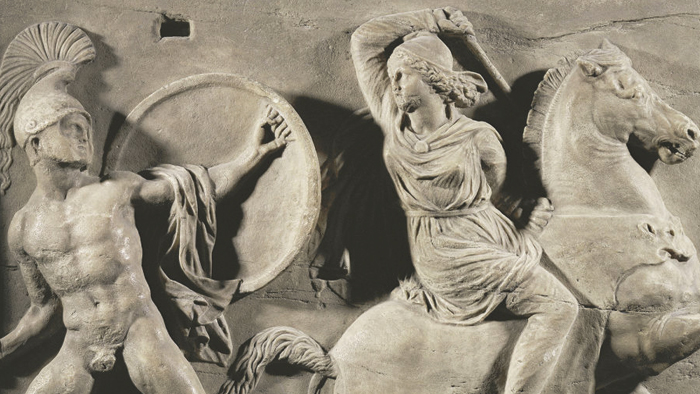
26 May Beauty Secrets from Central Asia’s Ancient Nomadic Heroines
The Scythians were a vast network of ancient Central Asian nomads, who roamed freely across the boundless Eurasian plains from the ninth century B.C.E. up until the fourth century C.E. They were masters of horse-born mobility and fearsome warriors. Scythian women, like their men, trained from a young age and took to their saddles, bows and arrows ready to defend and protect their clans, pastures and animals from enemies and invaders. But they too were equally concerned with their personal appearance and well- being. Their kurgans, burial mounds, revealed them to be lavishly dressed in their finest attire, buried with their exquisite jewelry and cosmetic pots filled with ancient beauty recipes, in preparation for their journey to the other world.
Here are 5 cosmetic secrets from the steppe’s ancient nomadic warrior heroines:
- Scythian women were famed in antiquity for their ability to withstand the harsh, unforgiving freezing temperatures of the Central Asian steppes. One secret behind this was their use of cosmetic fat-based unguents, which protected their delicate skin. One notable ointment was prepared from the juice of wild cabbage, which as a strong stimulant of circulation, brought blood to the surface and caused an invigorating warming sensation on their skins. The juice also alleviated the pains of arthritis they may have incurred from long hours of riding horseback.
- As nomads roaming the barren landscapes and bleak deserts of Central Asia, personal hygiene was based on methods of cleansing which required little use of water. Scythian women “washed” themselves through subjecting their bodies to smoke from aromatic plants, such as cannabis. They set up tepee-like structures made of felt canopy with a cauldron in its center. By burning the fragrant plants, their bodies would take in the perfumed and trapped smoke from the small enclosure.
- Following their funeral customs, Ancient Greek historian, Herodotus wrote that Scythian women coated their bodies with a paste made from pounded cypress and cedar wood pulp, frankincense and water. They used this paste not only as a ritual cleanser, but also a perfuming agent, which they kept on their skin for an entire day. Herodotus claimed that “a wonderful scent pervades them from this, a day later they take off the plaster and they have become shining clean”.
- As for make-up, Scythian graves discovered the women carrying a small box, containing colorants such as ochre, cinnabar, black carbon and white chalk. A similar cosmetics bag was also discovered in another grave, which also included a face brush made from horsehair, a bronze mirror and a fragment from an eyeliner pen filled with deep blue-green vivante powder.
- Scythian women also beautified themselves with highly artistic tattoos of fantastical and mythological animals. However these tattoos were also done as means of personal identification and protection. Scythian women believed that their elaborate tattoos would be of use in the after-life, making it easy for those in the same tribe and culture to find one another following death. They also revealed a woman’s age. The more tattoos a Scythian woman donned, the older she had been.
